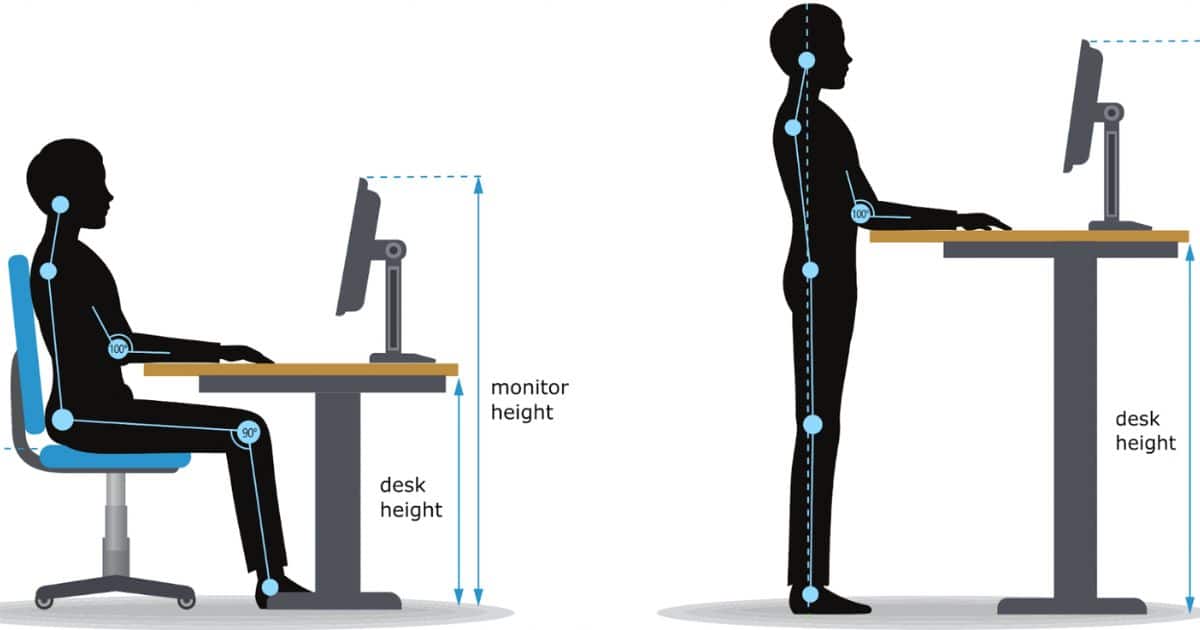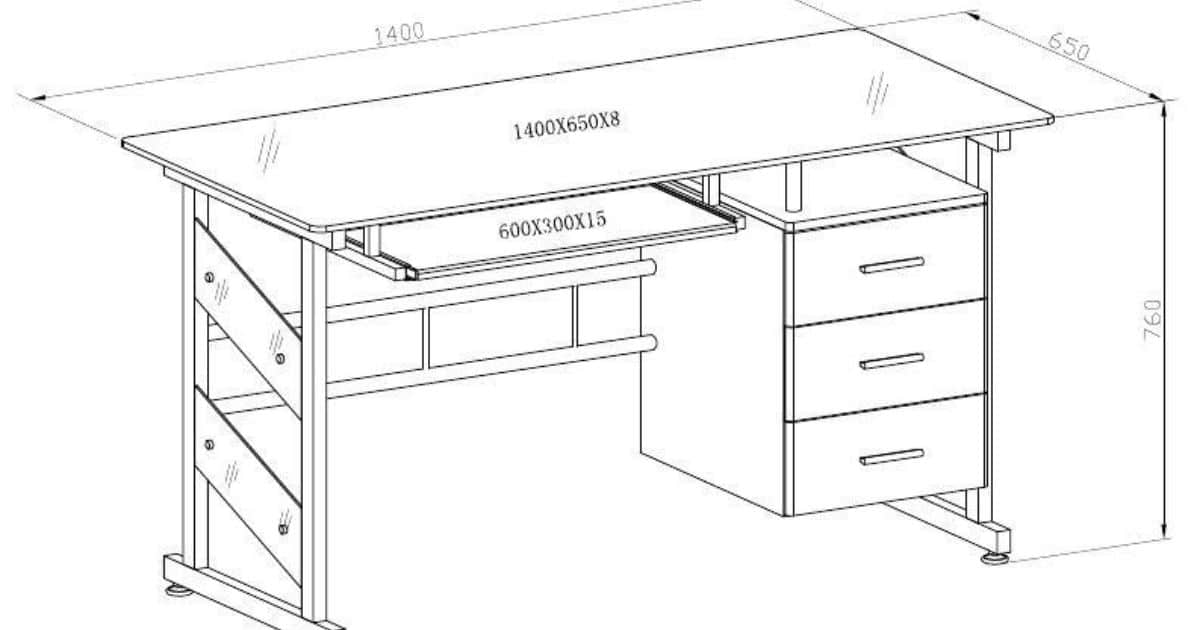To measure a desk, use a tape measure to determine its width, depth, and height, ensuring accurate dimensions for furniture arrangement. Are you tired of purchasing desks that end up being too tall, too wide, or simply not the right fit for your workspace? Look no further.
In this comprehensive guide, we will walk you through the step-by-step process of measuring a desk accurately. From determining the height, depth, and length of the desk to understanding the factors to consider before making a purchase, we’ve got you covered. Say goodbye to ill-fitting desks and hello to a workspace tailored to your needs.
Key Takeaways
- Desk height measurement is important for ergonomics, comfort, and proper posture.
- Desk depth measurement helps determine the size of the desk and the amount of workspace available.
- Desk length measurement is necessary to ensure the desk fits in the intended location.
- It is possible to measure a desk without the physical desk by using a floor plan or blueprint and considering clearance requirements and nearby furniture dimensions.
Desk Height Measurement

To accurately measure the height of a desk, you should use a measuring tape or ruler and ensure that it is placed vertically from the floor to the highest point of the desk’s surface. This measurement is crucial as it determines the ergonomics of the workspace and ensures optimal comfort and posture for the user. A desk that is too low can lead to hunching and strain on the neck and back, while a desk that is too high can result in discomfort and fatigue.
By measuring the desk height correctly, individuals can choose the appropriate chair and adjust its height accordingly to maintain a neutral posture. Knowing the desk height is essential when selecting accessories such as monitor stands or keyboard trays to ensure proper alignment and a conducive work environment.
Desk Depth Measurement
The desk depth measurement is determined by measuring the distance from the front edge of the desk to the back edge. This measurement is crucial in determining the size and functionality of a desk, as it determines how much space is available for items to be placed on the desk surface. To accurately measure the desk depth, follow these steps:
- Clear the desk surface of any items.
- Position the measuring tape at the front edge of the desk.
- Extend the measuring tape towards the back edge of the desk, making sure it is parallel to the front edge.
- Read the measurement on the tape at the back edge of the desk.
- Record the measurement in inches or centimeters.
To provide a visual representation, here is a table showcasing the desk depth measurements for three different desks:
| Desk Model | Desk Depth (inches) |
|---|---|
| Desk A | 30 |
| Desk B | 24 |
| Desk C | 36 |
Desk Length Measurement
Measuring the desk length is essential for accurately assessing the size and space available for a desk. To measure the desk length, follow these steps:
- Clear the desk surface: Remove any items that may obstruct the measurement process.
- Place the measuring tape: Position one end of the measuring tape at the starting point of the desk.
- Ensure the tape is straight: Make sure the tape is not twisted or bent to ensure accurate measurements.
- Measure to the end: Extend the measuring tape to the opposite end of the desk, recording the length.
Measuring a Desk Without the Desk

When measuring a desk without the desk itself, it is important to consider alternative methods for assessing the dimensions and space requirements. One approach is to use the floor plan or blueprint of the room where the desk will be placed, if available. By measuring the available space and considering factors such as clearance requirements and ergonomic considerations, you can determine the appropriate size for your desk.
Another method is to measure the furniture or objects surrounding the desk area. By measuring the dimensions of nearby bookshelves, cabinets, or other furniture pieces, you can estimate the size of the desk that would fit comfortably in the space. Considering the intended use and functionality of the desk will help determine the necessary dimensions and features.
Factors to Consider Before Buying a Desk
What factors should be taken into consideration before purchasing a desk?
Budget and Cost:
- Determine your budget and stick to it.
- Consider the cost of additional features or accessories.
Size and Space:
- Measure the available space in your room or office.
- Consider the dimensions of the desk and how it will fit in the designated area.
Function and Features:
- Identify your specific needs and the purpose of the desk.
- Consider features such as storage options, cable management, and adjustable height.
Style and Design:
- Choose a desk that complements the overall aesthetics of your space.
- Consider the materials, color, and design elements that align with your personal style.
Ergonomics and Comfort:
- Ensure the desk provides proper support for your posture.
- Consider features like adjustable height, keyboard tray, and ergonomic accessories.
Taking these factors into consideration before purchasing a desk will help you make an informed decision that meets your needs, fits your space, and provides a sense of belonging in your environment.
Measuring for Delivery
After considering the factors mentioned in the previous section, it is essential to accurately measure the desk and its dimensions before arranging for its delivery. Measuring for delivery ensures that the desk will fit through doorways, hallways, and other narrow spaces. First, measure the width of the desk by taking the measurement from one side to the other. Next, measure the depth by measuring from the front edge to the back edge.
Measure the height by measuring from the floor to the highest point of the desk. These measurements will help determine if the desk can be safely transported and delivered to its intended location. It is crucial to provide these accurate measurements to the delivery company to avoid any complications or damages during the delivery process.
Standard Dimensions for Office Desks
To ensure the appropriate fit for office spaces, it is important to understand the standard dimensions for office desks. Office desks come in various shapes and sizes, but there are some common dimensions that are widely accepted in the industry. These dimensions, often referred to as office desk size, are based on ergonomic considerations and the need for efficient use of space.Here are the standard dimensions for office desks:
- Width: The width of an office desk typically ranges from 48 to 72 inches, providing ample space for work-related tasks.
- Depth: The depth of an office desk usually ranges from 24 to 36 inches, allowing for comfortable legroom and storage options.
- Height: The height of an office desk is usually around 29 to 30 inches, providing a comfortable working position for most individuals.
- Shape: Office desks come in various shapes, such as rectangular, L-shaped, and U-shaped, offering flexibility and functionality.
Importance of Accurate Desk Dimensions

Accurate desk dimensions are crucial for ensuring proper fit and functionality within a workspace. When selecting a desk, it is essential to consider the available space and the specific needs of the user. Having accurate dimensions allows for better planning and utilization of the workspace. It ensures that the desk will fit comfortably and allow for proper movement and ergonomic positioning.
Accurate dimensions also help in determining the placement of other office furniture and equipment, such as chairs, shelves, and storage units. Accurate desk dimensions enable efficient space management, reducing the risk of overcrowding or wasted space. By providing accurate measurements, individuals can create a workspace that promotes productivity, comfort, and a sense of belonging.
FAQ’s
How do I measure my desk size?
To measure your desk size, use a tape measure to determine the width, depth, and height, providing accurate dimensions for optimal workspace planning.
What is the standard size of a desk?
The standard size of a desk typically varies, but a common range is 48 to 72 inches in width, 24 to 36 inches in depth, and 28 to 30 inches in height.
Is 20 inches deep enough for a desk?
Yes, a desk with a depth of 20 inches can be sufficient for various tasks, but it depends on individual needs and the intended use of the desk space.
Is a 30 inches desk too tall?
A 30-inch desk height is considered standard and ergonomic for most individuals, but personal comfort preferences may vary.
Conclusion
In conclusion, accurately measuring a desk is essential for ensuring it fits seamlessly into your workspace. By taking into account the height, depth, and length of the desk, you can determine the best fit for your needs. It is also important to consider factors such as storage space, ergonomic design, and delivery requirements. By following these guidelines and considering standard dimensions for office desks, you can make an informed decision when purchasing a desk that suits your specific requirements.








